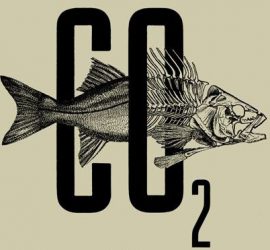Question 1
Acetone dissolves the polymer, allowing the gas of the foaming agent to escape. The polymer collapses on itself and is denser because the gas has been removed.
Question 2 (a)
LDPE cannot be used in this application because it does not have the required strength.
Question 2 (b)
The molecules of HDPE must line up in a way that produces the required strength. Using a thin liner of HDPE allows sufficient flexibility.
Question 3
When the piece of plastic is stretched, the strip narrows and “necks down.” The molecules become aligned parallel to each other and in the direction of the pull. This alteration of the three-dimensional structure is not reversible, and if the pulling continues, the plastic breaks. When the same pulling force is applied to a piece of paper, the paper tears rather than stretching to any significant extent. The cellulose molecules in a paper are held far more rigidly in place and are not free to become aligned.
Question 4 (a)
The benefits for polymers intended for use in the body should far outweigh any risks. The two main properties are (1) stable over time of intended use and (2) non-toxic. Other factors to consider are low cost, lack of solubility in body fluids, lack of reactivity in body fluids, and the ease of implantation.
Question 4 (b)
(b) Several different types of contact lenses are on the market and each uses a different type of polymer. Polymethyl methacrylate (PMMA), one of the earliest polymers used for rigid gas permeable lenses, is structurally similar to Lucite and plexiglas. Silicone-acrylate materials now are more commonly used under trade names such as Kolfocon. Newer rigid gas permeable (RGP) polymers contain fluorine: fluoro-silicone-acrylate polymers and fluoro-silicones. Polymacon (38% water) is typical of the polymers used for soft lenses and is a polymer of 2-hydroxyethyl methacrylate (HEMA). Other methacrylates include hioxifilcon (48% water) and methafilcon (55% water) or even lidofilcon (70% water). Manufacturers’ websites are good sources of information. Desirable properties include being nontoxic, permeable to oxygen, comfortable to wear, and inexpensive. Also desirable is the ability to conform to the shape of the eye and to be easily cleaned (if not disposable).
Question 4 (c)
As mentioned in the previous part, hard contact lenses are typically made of PMMA, a rigid non-gas permeable plastic. The soft contact lenses that replaced them are made of silicone, which is flexible and allows oxygen to reach the eye. Because of these properties, the soft lenses tend to be more comfortable.




